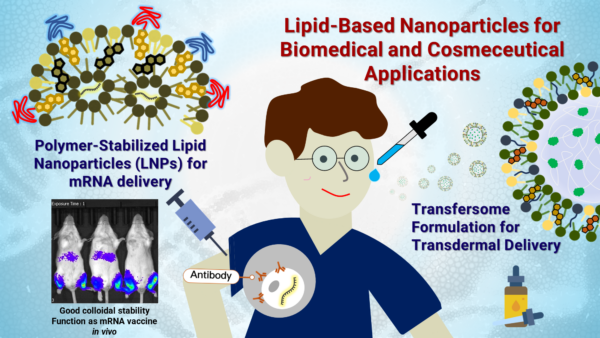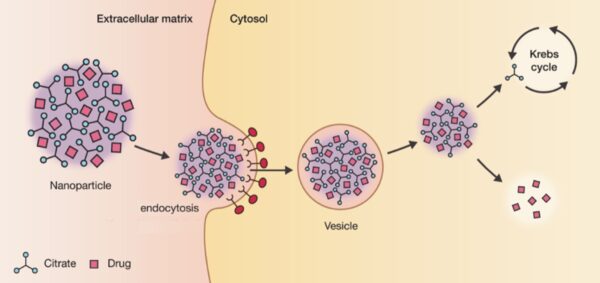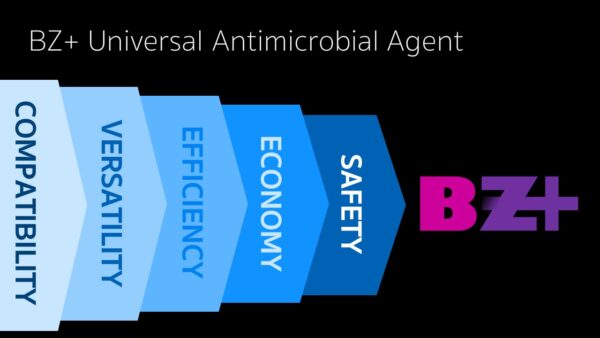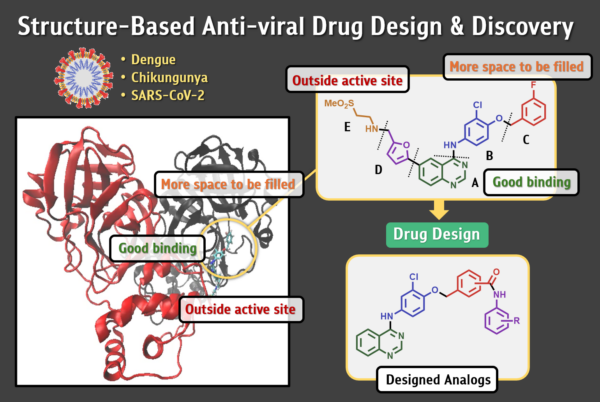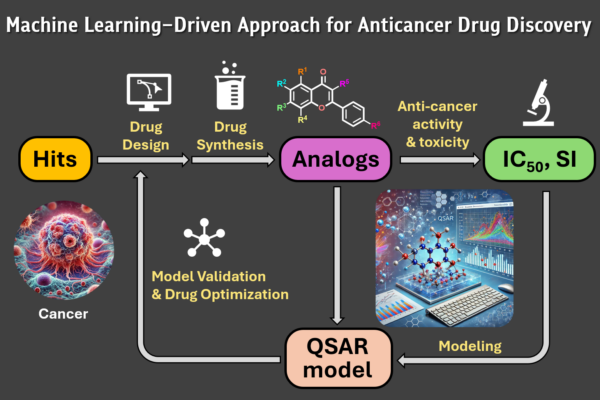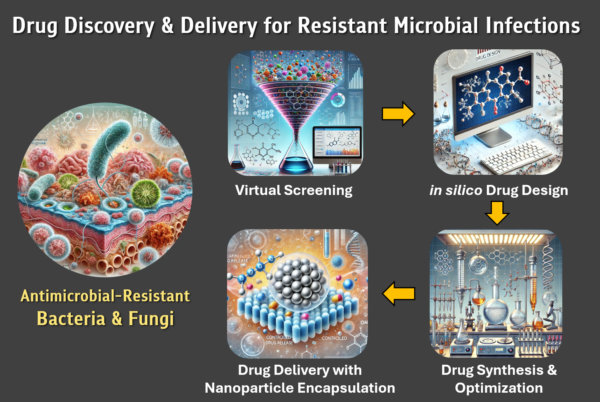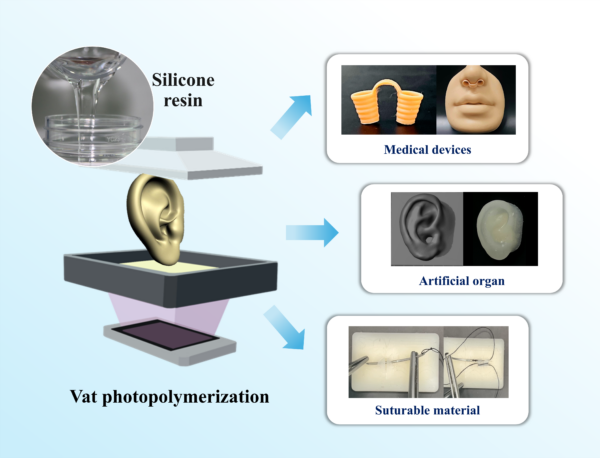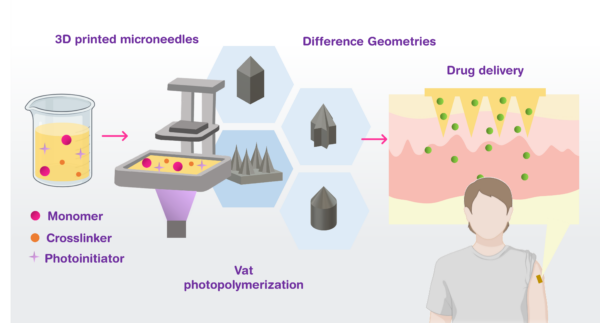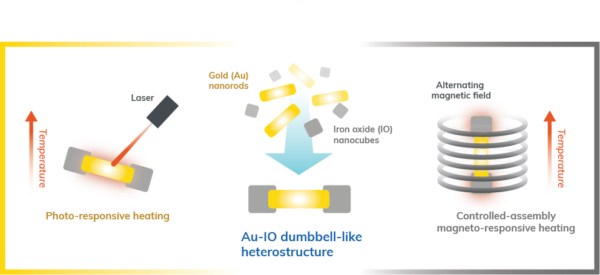Research Themes
Pharmaceutical and Cosmetic chemistry
Prof. Voravee P. Hoven
Lipid-based nanoparticles for biomedical and cosmeceutical applications
A method will be developed for the synthesis of gold (Au) and iron oxide (IO) dumbbell-like heterostructure. The material will be used as dual-responsive material through photothermal response of the Au module and magnetic hyperthermia response of the IO module. The synthesis will be done with Au nanorods of different aspect ratio as templates for the growth of IO modules. The length of the Au nanorods will be varied to control the orientation of the IO modules and tune both the photo- and magneto-responsive of the material. The final products will be tested as cancer hyperthermia agents in a 2D in vitro cell culture setting.
Assoc. Prof. Rojrit Rojanathanes
Ionic nanoparticles for drug delivery and control releasing applications
My current research interest is focused on developing novel ionic nanoparticles as a molecular delivery system. Drugs or active ingredients are pre−concentrated in the nanoparticles promoting the up-taking process of the cells. A novel calcium citrate nanoparticle has been developed in close collaboration with the department of anatomy, faculty of medicine, Chulalongkorn University. The nanoparticle carried and released an organic dye into the target cell efficiently. These findings strongly suggest that the calcium citrate nanoparticle can potentially be used as a novel drug carrier with high cellular uptake.
Assoc. Prof. Rojrit Rojanathanes
High-performance disinfectant
Novel disinfectant formulation, BZ+, have been developed. The synergistic effect of each chemical component reduces the functioning concentration into ppm level. Thus, ultrahigh concentration formulation can be achieved. All components are chemically inert, the disinfection mechanism is based on physical interactions leads to non-irritating properties. Moreover, its chemical compatibility allows further modification to suite specific purposes.
Assoc. Prof. Tanatorn Khotavivattana
Structure-Based Anti-Viral Drug Design and Discovery
The discovery of novel antivirals for dengue, chikungunya, and SARS-CoV-2 by integrating structure-based design with rational hit-to-lead optimization, focusing on methyltransferase (MTase), Main Protease (Mpro), and other key enzyme targets. Using X-ray crystallography and molecular dynamics (MD) simulations, we elucidate essential protein–ligand interactions that guide the identification of promising scaffolds. These leads undergo systematic organic synthesis, with iterative structure–activity relationship (SAR) refinements to optimize potency, selectivity, and physicochemical properties. The resulting compounds are subjected to enzymatic and cell-based assays to confirm efficacy, alongside toxicity assessments to ensure safety. For the most promising candidates, pharmacokinetic (PK) studies provide insights into absorption and metabolism, enabling a streamlined progression from early target validation to clinically relevant lead compounds.
Assoc. Prof. Tanatorn Khotavivattana
Machine Learning–Driven Approach for Anticancer Drug Discovery
The integration of high-throughput screening (HTS), synthetic chemistry, and machine learning (ML) provides a systematic and iterative approach to anticancer drug discovery. Promising hits from HTS of natural products and small molecules form the basis for developing an in-house library of analogs through innovative organic synthesis. This library is utilized to construct machine-learning QSAR models that predict and rank compounds based on potency, selectivity, and pharmacokinetics. Insights from these models feed back into the design–synthesis loop, enabling the creation of increasingly potent and selective anticancer agents. By combining data-driven insights with experimental validation, this approach aims to deliver novel, targeted therapies to address the critical need for innovative cancer treatments.
Assoc. Prof. Tanatorn Khotavivattana
Drug Discovery & Delivery for Resistant Microbial Infections
Development of innovative drugs and delivery systems targeting resistant microbial infections, including multidrug-resistant Pseudomonas aeruginosa, Candida auris, and azole-resistant Aspergillus fumigatus. The focus is on inhibiting key microbial enzymes involved in cell wall biosynthesis and remodeling, such as chitin synthase, chitinase, and β-glucan synthase. Virtual screening and in silico drug design are employed to identify potential inhibitors, followed by hit-to-lead optimization and SAR studies to enhance potency, selectivity, and pharmacokinetics. Optimized drugs are encapsulated in nanoparticles for targeted drug delivery, improving bioavailability, minimizing off-target effects, and ensuring localized action. This approach addresses antimicrobial resistance by integrating advanced drug discovery and delivery technologies.
Assist. Prof. Benjaporn Narupai
3D printing of silicone resin for medical devices
Silicone is a widely used material in medical devices due to its biocompatibility, flexibility, durability, and resistance to extreme temperatures, chemicals, and UV light, making it ideal for various healthcare applications. In our research group, we have developed photosensitive silicone resin for 3D printing via vat photopolymerization. By utilizing 3D printing technology, we can create personalized medical devices tailored to individual needs. Additionally, our suturable material can be used to 3D-print organs, providing medical professionals with realistic models to practice procedures before performing actual surgeries.
Assist. Prof. Benjaporn Narupai
3D Printed Microneedles for Transdermal Drug Delivery
Microneedles are sharp, needle-like structures capable of creating temporary mechanical channels on the skin’s surface, allowing for painless transport of encapsulated drugs. Traditional microneedle fabrication involves multi-step processes and expensive equipment, which limit the scalability of production. However, 3D printing technology has garnered significant attention for its ability to simplify fabrication processes and enable the creation of complex structures that surpass the capabilities of conventional techniques. In our research group, we have developed novel materials for stereolithographic 3D-printed microneedles. Our goal is to fabricate various designs and geometries of 3D-printed microneedles to investigate their mechanical properties, drug release profiles, swelling behavior, and degradation characteristics.
Dr. Wid Mekseriwattana
Synthesis of gold-iron oxide dumbbell-like heterostructure as a photo- and magneto-responsive material for cancer hyperthermia therapy
A method will be developed for the synthesis of gold (Au) and iron oxide (IO) dumbbell-like heterostructure. The material will be used as dual-responsive material through photothermal response of the Au module and magnetic hyperthermia response of the IO module. The synthesis will be done with Au nanorods of different aspect ratio as templates for the growth of IO modules. The length of the Au nanorods will be varied to control the orientation of the IO modules and tune both the photo- and magneto-responsive of the material. The final products will be tested as cancer hyperthermia agents in a 2D in vitro cell culture setting.


